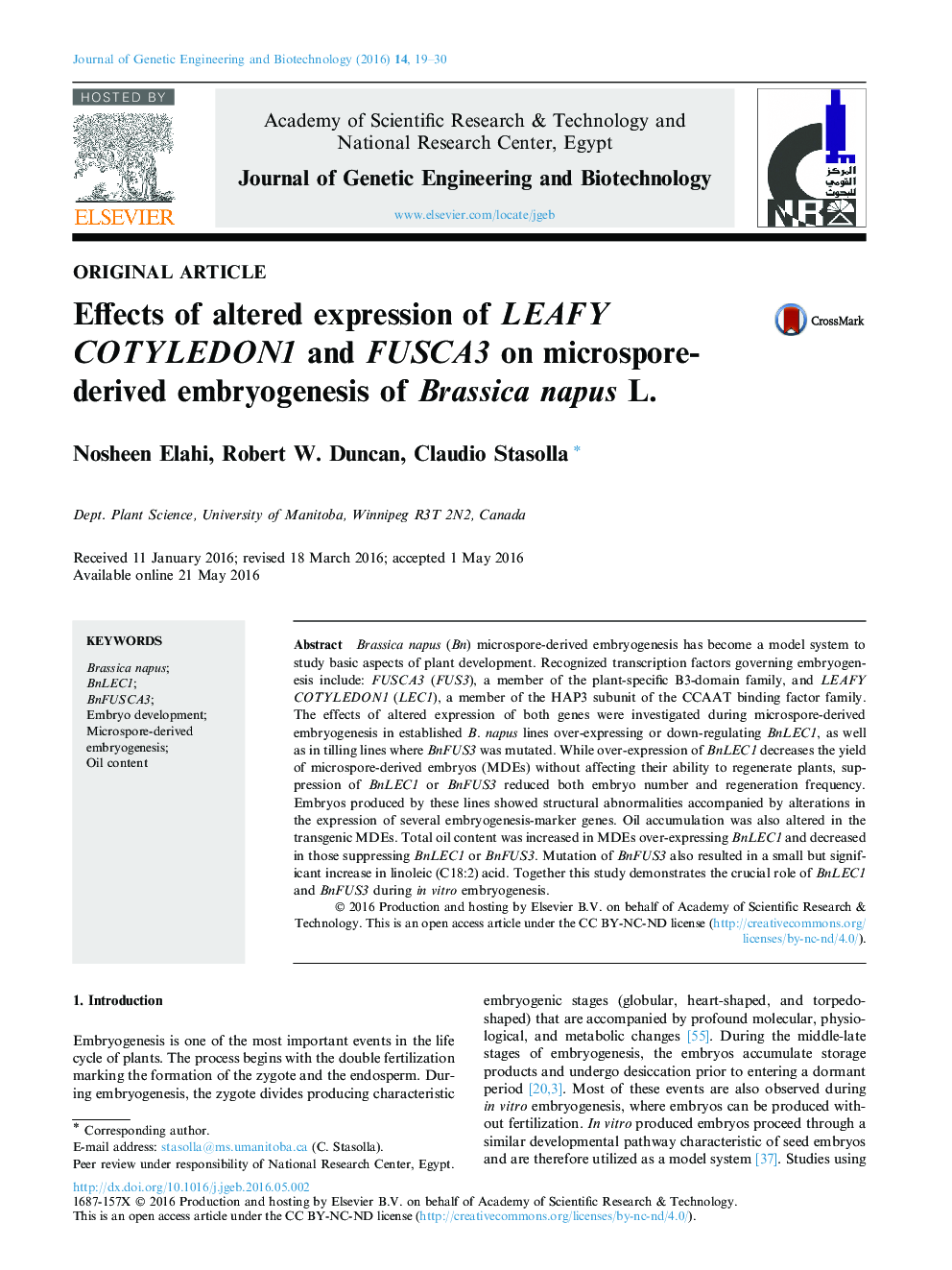| Article ID | Journal | Published Year | Pages | File Type |
|---|---|---|---|---|
| 8416535 | Journal of Genetic Engineering and Biotechnology | 2016 | 12 Pages |
Abstract
Brassica napus (Bn) microspore-derived embryogenesis has become a model system to study basic aspects of plant development. Recognized transcription factors governing embryogenesis include: FUSCA3 (FUS3), a member of the plant-specific B3-domain family, and LEAFY COTYLEDON1 (LEC1), a member of the HAP3 subunit of the CCAAT binding factor family. The effects of altered expression of both genes were investigated during microspore-derived embryogenesis in established B. napus lines over-expressing or down-regulating BnLEC1, as well as in tilling lines where BnFUS3 was mutated. While over-expression of BnLEC1 decreases the yield of microspore-derived embryos (MDEs) without affecting their ability to regenerate plants, suppression of BnLEC1 or BnFUS3 reduced both embryo number and regeneration frequency. Embryos produced by these lines showed structural abnormalities accompanied by alterations in the expression of several embryogenesis-marker genes. Oil accumulation was also altered in the transgenic MDEs. Total oil content was increased in MDEs over-expressing BnLEC1 and decreased in those suppressing BnLEC1 or BnFUS3. Mutation of BnFUS3 also resulted in a small but significant increase in linoleic (C18:2) acid. Together this study demonstrates the crucial role of BnLEC1 and BnFUS3 during in vitro embryogenesis.
Related Topics
Life Sciences
Biochemistry, Genetics and Molecular Biology
Biotechnology
Authors
Nosheen Elahi, Robert W. Duncan, Claudio Stasolla,
